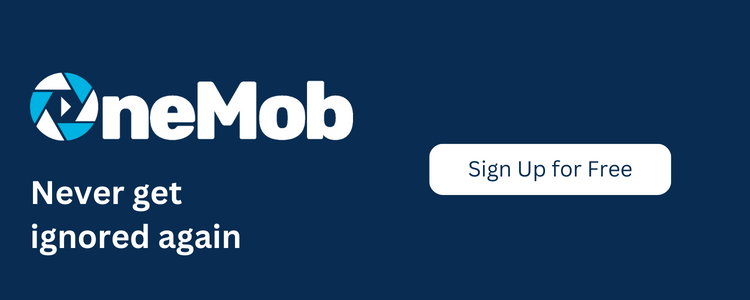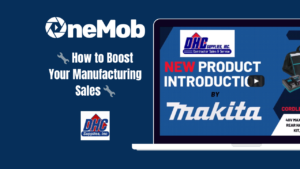The Importance of Sales Outreach Strategy
A sales outreach strategy, or sales outreach plan, is a systematic approach that sales teams use to reach out to potential customers and engage them in meaningful conversations. It involves a combination of targeted prospecting, personalized messaging, and strategic follow-ups to build relationships and drive sales. A well-executed sales outreach strategy can greatly enhance a company’s sales efforts, leading to increased revenue and business growth.
Benefits of implementing a sales outreach strategy
1. Increased customer acquisition: Implementing sales outreach services allows sales teams to proactively identify and engage with potential customers who may have never considered their products or services. By reaching out to these prospects and showcasing the value they can provide, companies can expand their customer base and increase their market share.
2. Personalized and targeted approach: A sales outreach strategy enables sales representatives to tailor their messaging and approach to each individual prospect. By understanding the prospect’s pain points, needs, and preferences, sales teams can create personalized outreach messages that resonate with the prospect and demonstrate how their product or service can solve their specific challenges. This targeted approach increases the chances of a positive response and engagement.
3. Improved conversion rates: By utilizing a structured sales outreach strategy, companies can significantly improve their conversion rates. Outreach sales are more comprehensive stragety since, instead of relying solely on inbound leads, sales teams actively reach out to potential customers who are more likely to be interested in their offerings. This proactive approach ensures that sales representatives spend their time and effort on prospects that have a higher likelihood of converting into customers, resulting in a more efficient and effective sales process.
Common challenges faced in sales outreach
1. Reaching the right prospects: One of the main challenges in sales outreach is identifying and reaching the right prospects. Sales teams need to invest time and effort into researching and segmenting their target audience to ensure that their outreach efforts are directed towards individuals or companies who are most likely to be interested in their products or services.
2. Standing out from the competition: In a highly competitive market, it can be challenging to capture the attention of prospects and differentiate your outreach from that of competitors. Sales representatives must find unique ways to stand out, whether it’s through personalized messaging, creative content, or innovative approaches that grab the prospect’s attention and make them want to engage further.
3. Overcoming objections and rejections: Sales outreach often involves facing objections and rejections from prospects who may not be interested or ready to engage at that particular moment. Sales teams need to be prepared to handle objections effectively, address concerns, and provide value proposition that resonates with the prospect’s needs. Persistence, resilience, and adaptability are key traits for successful sales outreach.

Implementing a well-defined sales outreach strategy is crucial for businesses looking to generate new leads, nurture relationships, and close deals. By understanding the benefits and challenges associated with sales outreach and utilizing effective tactics and tools, sales teams can improve their outreach efforts and achieve greater success in their sales endeavors.
Key Elements of an Effective Sales Outreach Strategy
An effective sales outreach strategy is crucial for engaging prospects and converting them into customers. It involves a systematic approach to reaching out to potential clients, building relationships, and ultimately closing deals. Here are the key elements that contribute to a successful sales outreach strategy:
Identifying Target Audience and Goals
Before initiating any outreach efforts, it is essential to clearly define your target audience and set specific goals. Take the time to research and understand your ideal customer profile (ICP) to identify the individuals or organizations most likely to benefit from your product or service. This will help you tailor your outreach efforts to resonate with their needs and challenges.
By understanding your target audience, you can:
- Segment your prospects based on their characteristics and preferences.
- Personalize your messages and tailor them to their pain points.
- Focus your efforts on the most promising leads.
Crafting Personalized and Compelling Messages
Once you have identified your target audience for your customer outreach strategy, the next step is to craft personalized and compelling messages that grab their attention. Generic, one-size-fits-all templates are unlikely to generate the desired response. Instead, take the time to understand the prospect’s pain points, challenges, and goals, and tailor your messaging accordingly.
Some tips for crafting personalized and compelling messages include:
- Referencing specific details from the prospect’s website, social media, or recent news.
- Highlighting how your product or service can solve their specific problems.
- Using storytelling techniques to make your message more engaging and relatable.
Utilizing Multiple Communication Channels
Reaching out to prospects through a single communication channel may limit your chances of success. By utilizing multiple channels, such as email, phone calls, social media, and even in-person meetings, you can increase your visibility and engage prospects through their preferred medium.
Consider the following when choosing communication channels:
- Research which channels your target audience is most active on.
- Use a combination of channels to increase your chances of reaching prospects.
- Adapt your messaging to suit the specific channel and its communication style.
Implementing a Follow-Up Plan
Following up is a crucial aspect of any sales outreach strategy. Many deals are lost simply because the salesperson fails to follow up consistently. Implementing a well-defined follow-up plan ensures that you stay top-of-mind with prospects and increases the likelihood of conversion.
Consider these tips for effective follow-up:
- Set a schedule for follow-up activities, including phone calls, emails, and meetings.
- Personalize your follow-up messages based on previous interactions or conversations.
- Use a CRM system to track and manage your follow-up activities.
Tracking and Analyzing Outreach Performance
Tracking and analyzing the performance of your outreach efforts is essential for continuous improvement. By monitoring key metrics and analyzing the data, you can identify what is working well and what needs adjustment. This data-driven approach allows you to refine your strategy and optimize your outreach efforts.
Consider tracking the following metrics:
- Response rate: Measure the percentage of prospects who respond to your outreach.
- Conversion rate: Track the percentage of prospects who convert into customers.
- Engagement rate: Monitor the level of engagement with your outreach messages.
By implementing these key elements into your sales outreach strategy, you can increase your chances of success and maximize your conversion rates. Remember to continuously analyze and adapt your approach based on the results you achieve, as there is no one-size-fits-all solution when it comes to sales outreach.
Examples of Successful Sales Outreach Strategies
Now that we have discussed the key elements of an effective sales outreach strategy, let’s take a look at some real-life case studies that demonstrate how companies have achieved remarkable results through their outreach efforts.
Case Study: Company X’s Targeted Email Campaign
Company X, a leading software solutions provider, implemented a targeted email campaign to engage with potential customers. They meticulously researched their target audience and crafted personalized messages tailored to the recipients’ pain points and challenges.
Their approach included:
- Segmenting the email list based on industry, company size, and job roles to ensure relevant messaging.
- Using compelling subject lines and email copy that grabbed the recipients’ attention and conveyed value.
- Including personalized elements like the recipient’s name and company in the email to create a sense of individualized communication.
- Adding a clear call-to-action that encouraged recipients to take the desired next steps, such as scheduling a demo or requesting more information.
The results were astounding. Company X saw a significant increase in email open and response rates, leading to a substantial boost in qualified leads and ultimately closing more deals.
Case Study: Company Y’s Social Media Outreach
Company Y, a fast-growing e-commerce platform, leveraged the power of social media to connect with their target audience. They recognized that their potential customers spent a significant amount of time on platforms like Instagram and LinkedIn, so they devised a social media outreach strategy to engage with them.
Their approach included:
- Creating engaging and visually appealing content that resonated with their target audience’s interests and pain points.
- Using targeted ads and sponsored posts to reach a wider audience and increase brand visibility.
- Engaging with followers and prospects through comments, direct messages, and personalized responses.
- Collaborating with influencers and industry experts to amplify their reach and credibility.
Company Y’s social media outreach efforts paid off handsomely. They experienced a surge in brand awareness, an increase in website traffic, and a growing community of engaged followers who eventually converted into loyal customers.
Case Study: Company Z’s Event-Based Approach
Company Z, a B2B consulting firm, took a unique approach to their sales outreach strategy by focusing on events and conferences. They recognized that industry events provided an excellent opportunity to connect with decision-makers and establish meaningful relationships.
Their approach included:
- Researching and selecting relevant industry events where their target audience was likely to attend.
- Pre-event outreach through personalized emails and social media messages to invite prospects to meet at the event.
- Creating informative and visually appealing booth displays to attract attendees and showcase their services.
- Conducting engaging presentations and workshops to position themselves as thought leaders in their industry.
- Following up with leads promptly after the event to nurture relationships and convert them into clients.
Company Z’s event-based approach proved to be highly successful. They generated a significant number of high-quality leads, secured new clients, and established themselves as a go-to consulting firm within their niche.

These case studies exemplify the power of well-executed sales outreach strategies. Whether it’s through targeted email campaigns, social media outreach, or event-based approaches, companies can achieve remarkable results by understanding their target audience, crafting personalized messages, utilizing various communication channels, implementing follow-up plans, and analyzing performance metrics.
By taking inspiration from these success stories and tailoring the strategies to their specific industry and audience, sales development representatives and account managers can enhance their outreach efforts and drive meaningful business growth.







